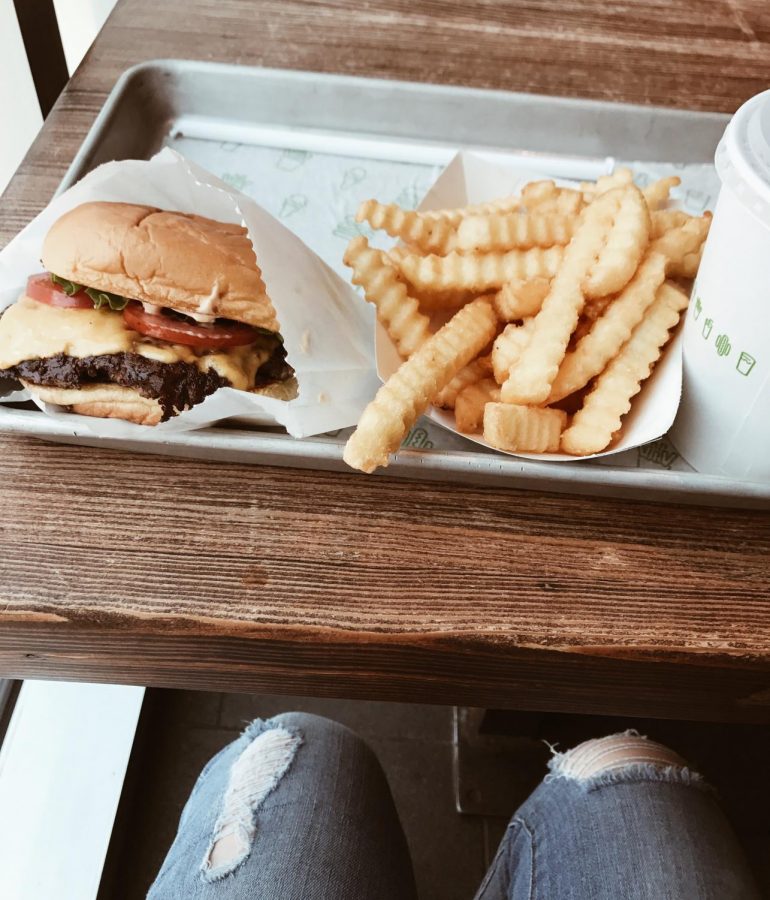The link between food and skin
February 8, 2019
We’ve all heard the myth that chocolate causes acne and that eating greasy food will make one’s face oily. We’re often times told to not eat certain foods because they’ll give us blemishes, or acne and anyone who’s ever suffered from acne knows the comment “drink lots of water!” all too well. Although eating the french fries you’ve craved since math class won’t make you wake up with an oily face, it’s not a lie that the foods we eat relate to how our skin looks.
“Based on the studies we now have available, the evidence suggests that diet does play a role in acne,” says Whitney P. Bowe MD, FAAD, a board-certified dermatologist and clinical assistant professor of dermatology at State University of New York (SUNY) Downstate College of Medicine in Brooklyn, and lead author of the article, “Diet and Acne,” published in the Journal of the American Academy of Dermatology.
What foods should be avoided and how might they be affecting our skin? How food affects your skin— sugar, dairy, and much-feared carbs.
Sugar, although sweet and found in almost everything we eat, is known to cause premature aging in one’s skin.
The secret behind youthful skin is having healthy elastin and collagen, but consuming things such as sugar can become a threat. Sugar, also known as an enemy to youthful skin, can irreversibly damage skin in a process known as cross-linking. In short, glucose and fructose work to link the amino acids in elastin and collagen, which causes the collagen fibers to become hard, stiff, and unable to repair themselves.
Due to the fact that cross-linking isn’t linked to DNA or genetics, it’s preventable and dependant on one’s eating habits and lifestyle. Intaking less sugar is a key step in avoiding cross-linking, as well as avoiding pollution, UV light, and smoke. Trying a sugar-reduced diet can reduce one’s chances of experiencing collagen breakdown from cross-linking.
Dairy, although tasty with cereal and the main ingredient of most Ben and Jerry’s ice cream, is known to cause acne and inflammation in one’s skin.
Cow’s milk, much like refined carbohydrates, can lead to an insulin spike and overproduction of sebum. Due to the fact that cow’s milk is meant to allow newborn calves to grow quickly, it has anabolic steroids and growth hormones. These properties can affect the human body by causing spikes in insulin, thus stimulating sebum production.
Cow’s milk also contains casein and whey. These proteins affect many people because they’re unable to properly digest them, which resulting in inflammation in the gut which then advances through the one’s bloodstream. All in all, according to multiple studies and research, consuming less dairy can result in lower levels of sebum production and skin that is less inflamed.
Refined carbohydrates, although tasty and a must have on a movie night, is known to cause high levels of oil and acne on one’s skin.
What foods fit into this category? Foods such as pasta, white bread, white rice, and potatoes. Avoiding these foods is recommended due to their high glycemic index, for it can result in higher insulin and glucose levels.
How are insulin and glucose related to one’s skin? High levels of both insulin and glucose lead to an overproduction of sebum, thus resulting in an oily complexion and breakouts. Studies and data show that consuming low-glycemic foods for a prolonged time results in an improvement of skin inflammation, acne, and size of oil glands.
Eating more leafy vegetables, fruits, and healthy proteins as well as foods rich in omega fatty acids is a place to start for better skin. Although choosing between a donut and an orange can be difficult, the result will be worth it. Remember, the key is to have balance.









